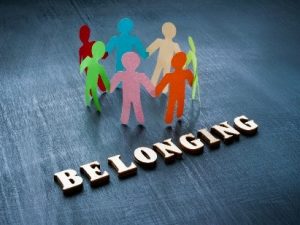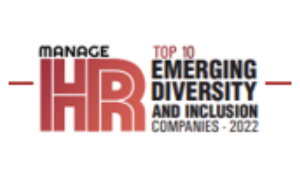What is an ally?
It’s not just a buzzword (although sometimes it can feel like it). An ally is often defined as someone who is not a member of a marginalized group but wants to support and take action to help others in that group. Allyship in the workplace is crucial for inclusion and belonging.
According to Great Place To Work, belonging in the workplace is “an employee’s sense that their uniqueness is accepted and even treasured by their organization and colleagues. [It] is an accumulation of day-to-day experiences that enables a person to feel safe and bring their full, unique self to work.”
How Many Types of Workplace Allies Are There?

Based on Karen Catlin’s “Better Allies” process, the tool sets out seven types of allies – Sponsor, Champion, Advocate, Amplifier, Scholar, Upstander, and Confidant.
Developing your own allyship can also be a stretching and enriching journey for yourself. You are likely to learn a lot about yourself, including:
- awareness of your own biases and their impact
- how well you develop meaningful reciprocal relationships with people who are different to you
- how well you engage in challenging and emotive conversations.
We summarized the seven types of allies are here: The 7 Types of Allies – Which One Are You?
How a Culture of Allyship Positively Transforms the Employee Experience
Employee experience is the way in which employees internalize and interpret the interactions they have with their organization, as well as the context that underlies those interactions.
Allyship is a powerful tool for creating inclusive workplaces, but it also offers unique benefits that extend beyond diversity initiatives. Here are some unique reasons why allyship positively transforms the employee experience:
Boosts employee confidence: When individuals know they have allies advocating for their success, it boosts their confidence to take on new challenges, share innovative ideas, and assume leadership roles. This leads to increased employee initiative and ownership.
Enhances cross-departmental collaboration: Allyship encourages employees to build relationships outside of their immediate teams. By supporting colleagues from diverse departments and backgrounds, allyship fosters stronger cross-functional collaboration and teamwork.
Supports organizational adaptability: A culture of allyship helps organizations adapt more effectively to changing markets or external pressures. By empowering diverse perspectives, companies can pivot more quickly and develop solutions that take into account a wide range of experiences and needs.
Improves conflict resolution: Allyship can act as a buffer during workplace conflicts, ensuring that underrepresented voices are included and heard during resolution processes. Allies help mediate conflicts by providing a balanced perspective, reducing tensions, and fostering a more harmonious work environment.
Strengthens corporate social responsibility (CSR) initiatives: Organizations that practice allyship internally are better positioned to extend those values externally through CSR efforts. Allies help drive impactful community outreach and philanthropy initiatives, aligning internal culture with broader social goals.
Creates leadership pipelines for diverse talent: Allyship plays a key role in nurturing future leaders from underrepresented groups by providing mentorship, guidance, and advocacy. This helps create a more diverse leadership pipeline, ensuring long-term organizational success.

Final Thoughts
Allies help create the “best” employee experience, one where employees feel valued, supported, and motivated in their work. This is achieved through a positive workplace culture that prioritizes employee well-being, offers opportunities for growth and development, and fosters a sense of belonging. It also includes aspects like work-life balance, recognition, trust, flexibility, and alignment with company values; essentially creating an environment where employees are engaged, productive, and satisfied with their jobs.
Download Your Ultimate Build a Culture of Belonging Toolkit: Ten key drivers to build a belonging workplace culture with allyship and intention here.








